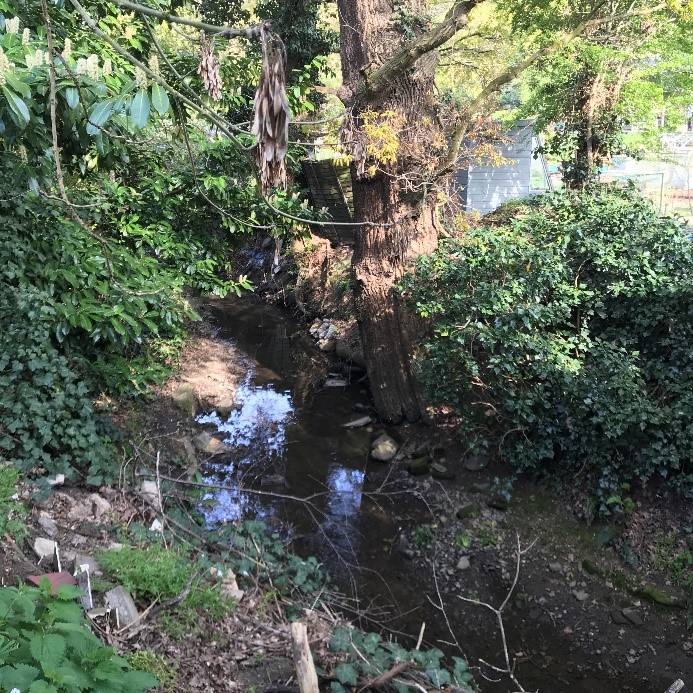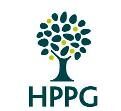THE ART OF REMEMBERING – By Paul Revoir

As part of the 2019 Art Trail, journalist and Highams Park resident Paul Revoir has written the fascinating article below about art critic John Berger who spent his early childhood in Highams Park, please read on and we hope you find it interesting:
THE ART OF REMEMBERING – By Paul Revoir – How John Berger’s time as a young boy in Highams Park left its mark on the novelist and TV presenter
ART critic and Booker Prize winning author John Berger was hardly effusive in his praise of Highams Park.
He sniffily described it as “a downmarket east London suburb, twenty minutes by train from Liverpool Street” in one of his writings.
But while Berger was rather dismissive of the area, it is fair to say the time he spent here as a young boy left powerful memories he later explored in his work.
That period up until the age of six, living at 19 Gordon Avenue, near Highams Park Lake, prompted vivid and moving recollections of family life for the author. We know this because he wrote about it in more than one of his published works.
For the uninitiated, John Berger, who died in 2017 aged 90, became a well-known public figure in the 1970s with his BBC TV series Ways of Seeing. Broadcast in 1972, it attacked the fusty elitism of most art criticism. Casually dressed, with a slightly dishevelled hairdo, Berger stood right up close to the TV camera and took on the art establishment across a range of subjects. He tackled the way oil paintings had become a commodity, the relationship between art and advertising, and the sexist assumptions around female nudity.
The series, which won a BAFTA award, was said to have helped change the way people thought and talked about art. The spin-off book sold more than a million copies and is still in print, for many years becoming an essential item on any art student’s reading list.
The same year that his series aired, Berger won the Booker Prize for his novel G, the story of a Don Juan figure whose sexual exploits are set against a backdrop of historical upheaval. Berger, a passionate Marxist, provocatively said he was giving half of his prize money to the Black Panthers.
Ways of Seeing, with its 166 pages and distinctive cover featuring a Magritte painting, was one of the most influential academic art books during my time as a student.
So when I recently learned he had spent part of his childhood in Highams Park, I was intrigued to find out more. The best source of information about this period in his life seemed to be contained in a short story called The Szum and the Ching, which is part of a 2005 collection called Here is Where We Meet. Although the book is described by one publisher as “shimmering fiction drawn from chapters of his own life”, the part which deals with his time at Gordon Avenue feels deeply rooted in the reality of his childhood. This is shown both in the descriptions of his home and the landscape, and the emotional honesty with which he writes about his father.
After being first to arrive at a friend’s empty house in a rural location in Poland, the piece sees the author sitting on a bridge over a river, drifting into childhood recollections. In particular, he is drawn to the memory of the drawbridge his father built across the Ching at the bottom of his garden in Highams Park. The Saturday afternoon ritual of using “ropes and pulleys” to lower the planks of wood across the water was for Berger a form of therapy for his emotionally-scarred father, who was deeply affected by his experiences as an infantry captain in the First World War.
“The Ching was my father’s river. For a few years it was the best thing in his life, and he wanted to share it with me. It cleaned the remembered wounds that would never heal”, writes Berger.
He adds: “The Ching could not bring back any of the countless dead but he could cross over the drawbridge to the other side and stand there for a minute or two, as if he were the man of twenty-five who in 1913 could not imagine a single hour of the four years of trench warfare to come. When he lowered the drawbridge, he could borrow my innocence and so recall his own, which otherwise – except for those Saturday afternoons – was for ever lost.”
Fig.1 The Ching at the rear of 19 Gordon Avenue
The five-year-old Berger would also lay flat on his stomach and “let the water of the Ching flow around my wrists” or fit his entire body into one of his father’s long wading boots, joyously hopping along the banks of the river in it. His mother’s sole reason for visiting the river bank was to collect gooseberries when she was making jam.
For the art critic it was the next door neighbour’s house that gave him the most pleasure. Wandering through its unlocked door and browsing through the children’s books left on a bench, stroking the Airedale terrier or going on forest expeditions with Camellia, the teenage daughter that lived there. The mother would bring him cinnamon cake, hot chocolate or even homemade yoghurt when he visited.
A check of historical public records held at the Vestry House Museum in Walthamstow, shows the names of Berger’s parents – Stanley Joseph Docking Berger and Ellen Miriam Berger – appearing on the electoral register at 19 Gordon Avenue in 1932 and 1933. But registers for the previous ten years are missing, as are the ones for 1934 and 1935. The family are no longer listed in 1936. Berger who was born in Stoke Newington in 1926 said in his writing that he lived at the Highams Park address until he was six. His mother Miriam had been a suffragette and Berger’s father Stanley, who had been awarded the Military Cross for his war efforts, went on to receive an OBE for his work in accounting.
Fig.2 Extract from Vestry House Register
When visiting the property in Gordon Avenue today it is easy to be transported back to the short story. The allotments on the other side of the River Ching, which he describes back in the early 1930s, are still there and the side entrance of the next door neighbour’s house seems to fit with his description.
Current owner of the property Leah Annett said it was exciting to think of the author playing in the garden as a boy.
She said: “I think it feels like a special house anyway and we always knew it was a special house and now we have got the proof. But the bit that was most exciting for me was about his experience of playing here. When we bought the house we bought it thinking about them [the children] and somewhere they can be close to the woods and wander around when they get a bit older, and I did think about the Ching as somewhere they would be able to paddle in.”
Fig 3. The garden at the rear of 19 Gordon Avenue
Unfortunately, and perhaps wholly predictably, the drawbridge is no longer there. But the various shards of wood around the banks of the river, near the spot he memorably describes, make you wonder if they could be weathered fragments from that ramshackle structure which brought so much happiness. With the sound of birdsong coming from within the trees you can also relate to Berger’s description that “it is the foliage itself that is singing”. It is easy to picture him and his father whiling away their Saturday afternoons there in the 1930s sunshine.
Note: Copies of the book are available at V&A Books at Bank Buildings, 2, The Avenue, London E4 9LE
If you have any information about John Berger we would be pleased to hear from you, please email us at highamsparkplan@gmail.com



